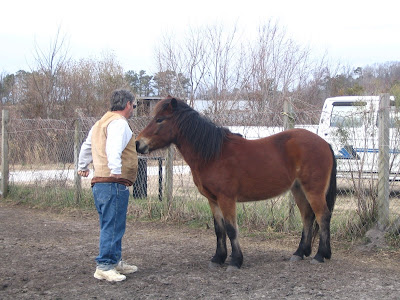
People say a lot of nice things about how we do things and the thing that I enjoy hearing the most is that my riders are different from so many kids in the competitive horse world. Have no doubt about it, I am proud of my little riders.
This morning they were out at the horse lot between four and five. We loaded two Shacklefords and seven Corollas to take down to the annual parade in Duck, North Carolina. It is a two hundred mile round trip. Duck is in the county bordering the area where the last wild Corolla Spanish Mustangs live. Of course, the horses were the hit of the parade. The parade gave another opportunity to show the public why it is so important for us to prevent the extinction of these historic horses.
My little riders, who trained these wild horses, who help care for them, who donate art work they have created to the Corolla Wild Horse Fund, who blog about the Corollas, and who attend Wild Horse Fund Board meetings, realize that they are part of something bigger than themselves.
We practice natural horsemanship in order to become better people and it is working. Chance had been working on improving his horse handling abilities in anticipation of the parade. He has improved dramatically. I know that he was really looking forward to the event.
As we were loading up this morning, one of the girls noticed that Porter was favoring his front right leg. We left him at home and I quickly instructed Jordan and Chance to split the parade route with each riding Croatoan for half of the route. Neither whined or pouted about having to split up the ride. Both showed maturity beyond their years.
Rylee turned down a trip to Water Country to be in the parade. Amanda worked hard this week getting her still nervous Corolla mare despooked. Lea and Ashley took leadership roles by helping instruct those who had never been in parades and assisting with tack organization. Danielle and Jacob handled their horses with calm, firm hands.
Perhaps even more meaningful was the hard work and participation that several of my adult riders and parents put into the event. It would have been impossible to have pulled off this event without their help.
I am very tired. And very proud.
















